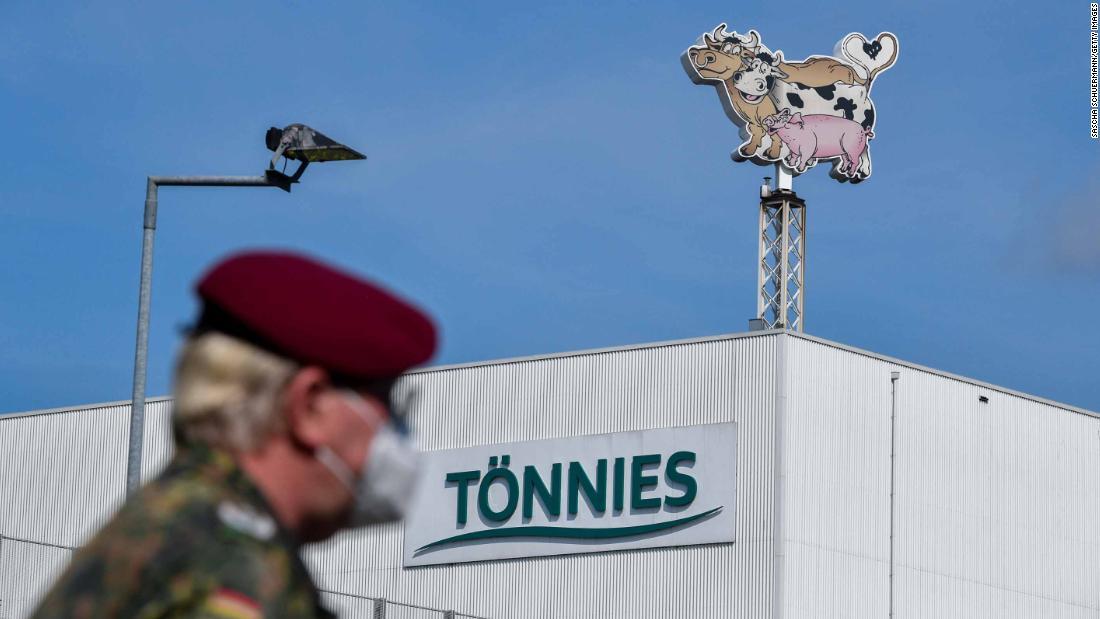Feature your business, services, products, events & news. Submit Website.
Breaking Top Featured Content:
Coronavirus Traveled Nearly 30 Feet At German Slaughterhouse Where 1,500 Employees Contracted Virus

Tyler Durden
Fri, 07/24/2020 – 02:45
COVID-19 particles traveled 26 feet across a German slaughterhouse where approximtely 1,500 workers contracted the virus, according to researchers who reconstructed the likely cause of the outbreak at the Toennies Groups slaughterhouse in Rheda-Wiedenbrueck.
According to Bloomberg, a combination of cold, stale air allowed the virus to spread over such a long distance, raising concerns that the same might happen at meat plants worldwide.
And while the virus is significantly less deadly than originally thought, it can lead to significant disruptions, as it takes between two weeks and several months to recover. Some patients still report symptoms, though how contagious they are is yet to be seen.
Similar conditions at plants globally are a reason they’ve become virus epicenters, according to the report from groups including the Helmholtz Center for Infection Research.
Meat plants from the U.S. to the U.K. and South America have seen the rapid spread of the virus, infecting thousands of employees who often work in close proximity on processing lines. Dozens of workers have died, and labor advocates have said that a lack of social distancing could continue to put people at risk. Outbreaks also forced American meat plants to close earlier this year, sparking some protein shortages. –Bloomberg
The Tonnies outbreak is believed to have been caused in May by a single employee who infected the rest of their co-workers in the plant’s dismantling area, where temperatures hover around 50 degrees Fahrenheit.
According to Adam Grundhoff, co-author of the study, chilly air circulated without frequent changes, combined with a strenuous work environment, helped move virus particles long distances.
“It is very likely that these factors generally play a crucial role in the global outbreaks in meat or fish processing plants,” said Grundhoff, a research group leader at the Heinrich Pette Institute, Leibniz Institute for Experimental Virology. He added that distances of 1.5 to 3 meters (5 to 10 feet) is insufficient to prevent transmission.
The Toennies plant — Germany’s largest pork abattoir — reopened last week after a month-long closure and plans to gradually ramp up output. The company, which posted a link to the research report on Twitter, also recently released a 25-point plan detailing measures it’s making to prevent further outbreaks. They include testing employees twice a week, hiring workers directly and overhauling ventilation.
The report’s findings show that no factory worldwide was built for such a crisis, and the company has invested in air filters and other mechanisms to protect employees, a Toennies spokesman said by email. –Bloomberg
The workers’ housing conditions were not found to play a significant role in the outbreaks.
“The important question now is under what conditions transmission events over longer distances are possible in other areas of life,” said Helmholtz center research group leader Melanie Brinkmann.
The results of the German meat plant study put COVID-19’s reach at just under twice that observed by a team of Chinese government epidemiologists, who found that aerosolized coronavirus can hang in the air for at least 30 minutes and travel up to 14 feet.
As we noted in March, the study, conducted by a team of Chinese government epidemiologists from Hunan province, also found that the virus can survive for days on a surface where respiratory droplets land.
The length of time it lasts on the surface depends on factors such as temperature and the type of surface, for example at around 37C (98F), it can survive for two to three days on glass, fabric, metal, plastic or paper.
These findings, from a group of official researchers from Hunan province investigating a cluster case, challenge the advice from health authorities around the world that people should remain apart at a “safe distance” of one to two metres (three to six and a half feet). –SCMP
The researchers warned that the virus could survive over five days in human feces or bodily fluids, and that it could remain floating in the air after a carrier had left a public bus.
“It can be confirmed that in a closed environment with air-conditioning, the transmission distance of the new coronavirus will exceed the commonly recognised safe distance,” the researchers wrote in their paper, published in peer-reviewed journal, Practical Preventive Medicine.
“Our advice is to wear a face mask all the way [through the bus ride],” the researchers recommended.
Continue reading at ZeroHedge.com, Click Here.

